There are many types of squirrels, and identifying them can be difficult without any guidance. Each of them has a unique set of characteristics and lifespans that are mostly influenced by their environment (captivity or the wild) and species type.
What are the types of squirrels? Among the varieties of squirrels are the Eastern gray squirrels, American red squirrels, Fox squirrels, Arizona gray squirrels, and Flying Squirrels. Furthermore, Douglas squirrels, Uinta ground squirrels, and White-tailed antelope squirrels are also among the diverse squirrel species.
Many other species aren’t mentioned above. Thus, if you want to learn more about these various species, keep reading. You’ll discover each of their physical characteristics, location, foods they eat, their average length, and their lifespan both in the wild and in captivity.
10 Types of Squirrels
As you might already know, squirrels have diverse species with various characteristics. According to National Geographic, there are over 200 species of squirrels around the world. Some of them are the following:
Eastern Gray Squirrels
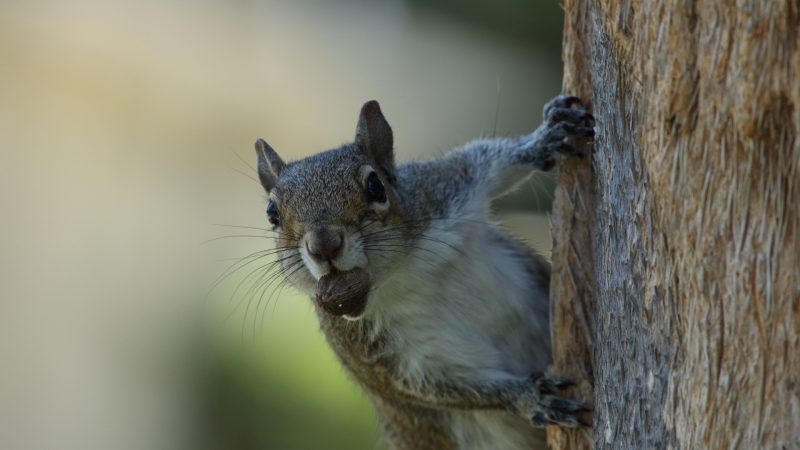
Eastern gray squirrels are commonly found in the United States. Like any other squirrels, they love to nibble nuts like walnuts, hazelnuts, and more.
You might also see them foraging in your yard for any seeds, buds, and flowers. There are also circumstances where you’ll see some diggings in your area as they love to bury their food in different spots.
You can identify the Eastern gray squirrels with the following characteristics:
- Grayish body
- Black and white fur
- Whitish belly
- Brownish to pale gray bushy tails
These species can last for 12 years in the wild and 20 years in captivity and can grow up to 16.6–21.6 inches.
American Red Squirrels
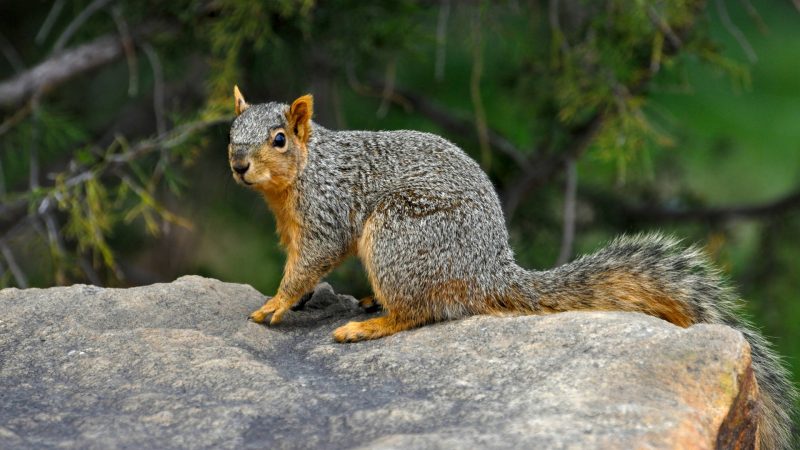
The American red squirrels are often found in some parts of Alaska, Central and Southern Canada, the Northeastern United States, and the Rocky Mountains.
They particularly eat the following foods:
- Acorns
- Mushrooms
- Hazelnuts
- Seeds
- Berries
- Birds’ eggs
You can identify the American red squirrels with the following features:
- Reddish or brownish upperparts
- Encircled white bands in their big black eyes
- Dark and creamy upper fur that is separated by the black stripe on its sides
This squirrel type can live up to 5–10 years in the wild and 20 years in captivity and can grow up to 11–14 inches.
Eastern Fox Squirrels
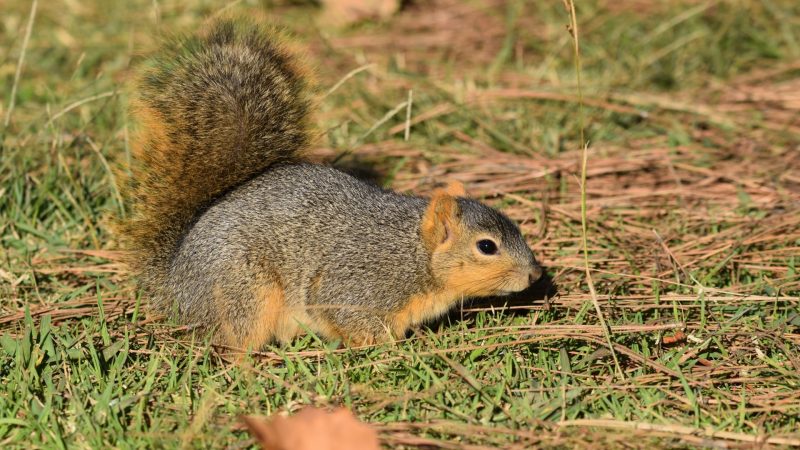
Fox squirrels, particularly the Eastern fox squirrels, are native to North America. They can also be found in the regions of:
- Saskatchewan
- Alabama
- British Columbia
- Manitoba
- Ontario
- Arkansas
- California and many other regions
The Eastern fox squirrels are omnivores. Thus, they typically feed on the following:
- Moths
- Dead fish
- Eggs
- Bird
- Beetles
- Acorn, walnut, hickory, mulberry, and more
You can identify these squirrels with their:
- Large-built body
- Long, yellowish-red bushy tails
- Sharp claws
- Muscular bodies
These species can live up to 6–7 years in the wild and 20 years in captivity and can grow up to 17.7–27.6 inches.
Arizona Gray Squirrels
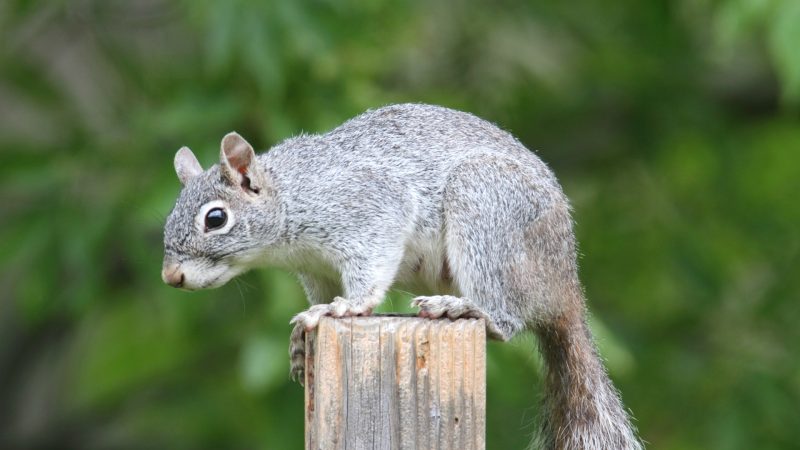
As the name suggests, the Arizona gray squirrels are primarily found in Arizona. Nonetheless, they can also be found in the North State of Sonora, Mexico, and Western New Mexico.
They love walnuts as their essential food source, but they also don’t mind nibbling other nut types, berries, mushrooms, and seeds.
When it comes to identification, you can recognize them with the following features:
- Gray fur
- Creamy white belly
- Smaller ears with no tufts
- Black or red stripe on the underside of their tails
These species can live up to 12 years in the wild and 20 years in captivity. Their length can reach up to 20 inches.
Northern Flying Squirrels
The Northern flying squirrels are endangered species and are typically found in Pennsylvania. They are rare and classified as priority species in the State Wildlife Action Plan.
Their foods include but aren’t limited to:
- Fungi
- Lichens
- Acorns
- Conifer seeds
- Beechnuts
You can identify them apart from other squirrel species with the following distinctions:
- Skin flaps extending from wrists to ankles
- Flattened top to bottom tails
- Large eyes
- Larger than southern flying squirrels
- Tan or brown fur on the back
- White tip hairs
These squirrels can survive up to 4 years in the wild and 13 years in captivity. They can grow up to 9.8–14.6 inches.
Humboldt’s Flying Squirrels
These furry critters have been sighted on the Pacific Coast of North America, stretching from Southern British Columbia to Southern California. Though they’re called ‘flying squirrels,’ they don’t fly but glide from tree to tree.
They have the same appearance as the northern flying squirrels, but they’re smaller and have darker pelage. They’re also a bit clumsy walkers, so you can quickly identify them.
They typically eat plant materials, as well as the following:
- Fungi
- Tree sap
- Carrion
- Nestlings
- Bird eggs
- Insects
You can find their nests on top of trees, far away from their predators on the ground. They can last 6 years in the wild and 13 years in captivity with a length of 12 inches.
Southern Flying Squirrels
The Southern flying squirrels can be found in Southeastern Canada, Mexico, Honduras, and the Eastern United States. They can also be found in the subsequent regions:
- Connecticut
- Delaware
- District of Columbia
- Ontario
- Québec
- Alabama
- Florida
- Illinois and more
They’re quite small and live in the woodland, which is mostly dominated by beech, hickory, oak, maple, and other hardwoods that produce seeds.
You can identify them with the following distinct features:
- Widely flattened and densely furred tail
- Large eyes
- Folded skin between its hind and forelegs
- Expandable skin used to rush into the air
They can last up to 5–6 years in the wild and 10 years in captivity with a length of 8.3–10.2 inches.
Douglas Squirrels
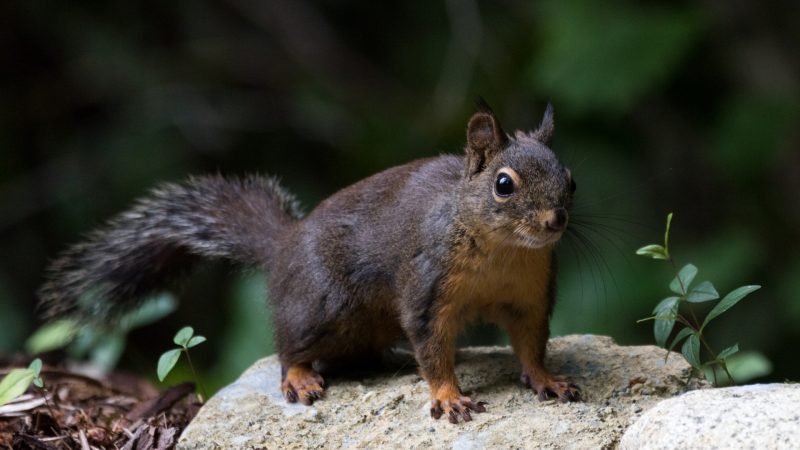
Douglas squirrels are endemic to British Columbia. They’re also called ‘chickaree’ and ‘pine squirrel.’ They can also be found in the regions of:
- Nevada
- Oregon
- British Columbia
- California
- Washington
They mainly feed on pine seeds and also eat:
- Twigs
- Fungi
- Sap
- Cambium of conifers
- Buds
- Leaves
- Acorns
- Mushrooms
- Fruits
- Nestlings
- Bird eggs
- Arthropods
You can recognize them by their orange-colored front teeth, whiskers in the nose, eyes, and chins, and reddish-brown colored upper body. Their undersides are orange-white, and they have grayish fur.
They can survive up to 5–6 years in the wild and then years in captivity with a length of 13 inches.
Uinta Ground Squirrel
The Uinta ground squirrels can be found in a small part of Southwestern Montana to Southern Utah. They can also be spotted in some areas of Eastern Idaho and Western Wyoming.
They typically eat mushrooms, insects, carrions, and grasses. You can distinguish them from other species with the following features:
- Short, bushy tails
- Grayish brown with a lighter underbelly
- Black-colored upper side tails
- Light brown or yellowish-brown head sides
- Lighter eyes outline
They can live up to 7 years in the wild and 8–9 years in captivity with a length of 11–12 inches.
White-tailed Antelope Squirrel
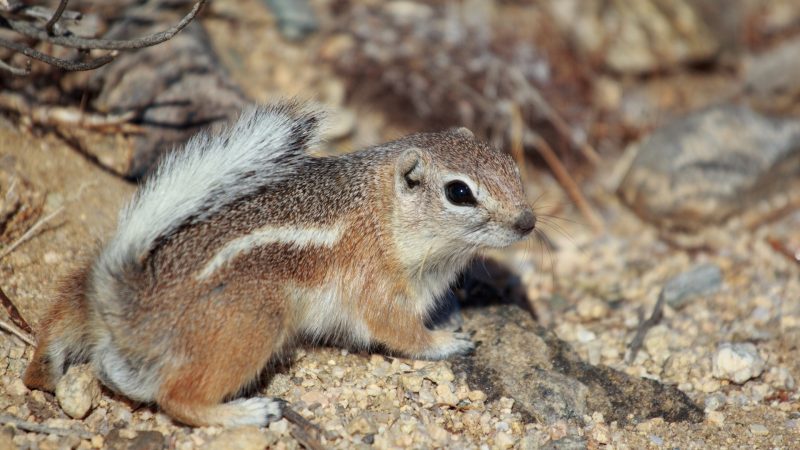
This species can be found in Western Colorado, Northern Arizona, Northwestern New Mexico, and as far away as the Southern Baja California Peninsula.
They usually live in areas that are sandy or rocky, given that the soil can be burrowed to promptly escape from their predators.
You can recognize them with the following features:
- Longer legs
- Small, round ears
- Whitish ventral surface
- Brown to gray back color
- White stripes from the shoulder to the hind end
- Reddish outer legs surfaces
- Pure white underside tails
White-tailed antelope squirrels mainly feed on seeds, foliage, arthropods, lizards, rodents, and other vertebrates. This species can live up to 2 to 4 years in the wild and 5 to 10 years in captivity, having a 7.5–9.5 inches body length.
Related: How Long Do Squirrels Live? | Information and Facts
List of Sources
Rubin, C. (2012). Red squirrel. University of Michigan.
Fahey, B. (2001). Fox squirrel. University of Michigan.
Butchkoski, E., Turner, G. (2010). Northern Flying Squirrel. Pennsylvania Game Commission.
New Flying Squirrel Species Discovered along North America’s Pacific Coast. (2017). Humboldt State University.
- How to Get Rid of Copperheads | Practical Guide - August 27, 2023
- How to Get Rid of Corn Snakes | What Makes Them Aggressive? - August 27, 2023
- How to Get Rid of Alligators | Safety Measures and Removal Methods - July 16, 2023
